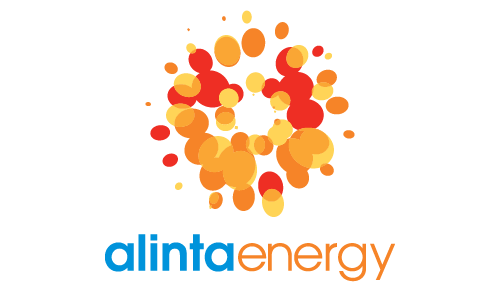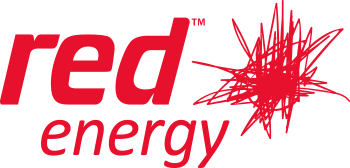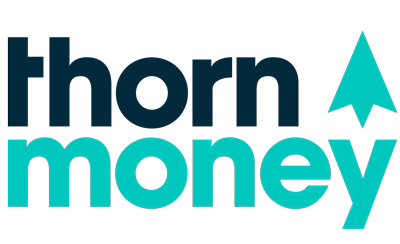Home > Energy Plans > Compare Energy Plans
Compare energy plans from some of Australia’s leading providers all in one place here through Savvy.
Author
Savvy Editorial TeamFact checked













We’ve partnered with Econnex to bring you a range of energy plans to help you compare them.













We’ve partnered with Econnex to bring you a range of energy plans to help you compare them.






















Are you tired of paying too much on your energy bills every month and looking to make the switch? Savvy can help simplify the process of comparing energy plans. Through us, you can consider a range of offers side-by-side from a panel of leading energy providers all in one place.
Our easy-to-use online quote process allows you to find and compare live energy plan offers for electricity, gas and solar. Don't waste any more time or money on costly energy bills; get a quote through Savvy and start comparing your options today.
Whether it’s electricity, gas or solar energy plans you’re after, comparing is easy through Savvy. Just follow these simple steps:
That’s how simple it is! There won't be any telemarketers trying to phone you at all hours; you can compare, switch and save online all in one place. Once you’ve made the switch, your new energy provider will contact you to confirm details and finalise your connection.
Comparing electricity plans is a different process depending on where you live in Australia. If you live in south-east Queensland, NSW, ACT, SA or Tasmania, it’s easy to compare plans through Savvy. In the NT, the state government sets the energy price, while WA has its own rules, as it isn’t a member of the National Electricity Market.
When comparing electricity plans, these are some of the variables to consider:
Cost of the plan
This should be detailed in the basic plan information document which is provided by your retailer or in other supplied written information they give you.
Tariffs
There are different ways of charging for electricity, which are reflected in the different types of tariff which are available:
Fees charged
There can be many different fees charged by retailers, which include:
Comparing the fees that are charged will help you clearly see who is charging the most fees for their service.
Benefit periods
Some electricity plans come with bonuses which are designed to attract new customers. However, just like a honeymoon period for a home loan, these benefits come to an end at some time. It’s worth considering how long the benefit period term is and what happens when it’s over.
Type of contract
There are two basic types of contract:
There are usually two charge rates to compare on gas plans:
Supply charge
This is a fixed amount you pay for your connection to the mains gas network. It’s usually measured in cents per day, although you may be given a total sum for the bill period (often 90 days or approximately three months). Your supply charge won’t change regardless of how much or little gas you use.
Usage rate charge
Natural gas is charged per megajoule (MJ) and is typically between 1.5 and 4.8 cents per MJ. Tariffs for gas are often sold in price blocks, so you pay a different (higher) rate for the first 100 MJ you use, and less for subsequent amounts.
On top of these rates, you should also compare the following aspects of gas plans:
Discounts
You can also consider the energy discounts you may be offered by a particular provider. These can include:
Fees
Also, compare the fees your gas company may charge you. These may include:
When comparing solar plans, the most important element to consider is the feed-in tariff (FiT) you’ll receive. This is the amount of money you earn from the electricity your solar panels generate (assuming you’re connected to the national energy grid). The tariff is also known as a ‘buy back rate’ or ‘solar tariff’ and is expressed in cents per kilowatt hour (kWh). It varies according to:
There are various types of feed-in tariffs available depending on which state you live in. For example, in Victoria there are variable feed-in tariffs which pay more for electricity generated during peak hours than they do for power generated during off-peak times.
You can compare solar plans and FiTs here through Savvy by uploading your e-bill or entering your address to check which other energy companies in your area might be able to offer a better deal on your solar generation.
Every home needs an electricity connection. From powering your fridge to your television, it's important to know the differences between electricity plans before you buy.
Who doesn't love a warm, cozy bedroom in winter or a hot shower on a cold morning? Natural gas helps heat things up in your home, so getting the right gas plan is crucial.
Solar panels are becoming increasingly common as Australians make a sustainable switch. Your connection to the grid is still important for when the sun isn't out, though.
Energy providers are now providing plans to Australians who want to make use of more environmentally friendly sources. These are often known as green energy plans.
It isn't all about homes, though. Electricity and gas are vital for small, medium and large businesses around Australia, so some retailers offer specialist plans to match.
You won’t need to pay a cent to compare a variety of energy plans online through Savvy, as it’s 100% free.
By filling out your form and providing a recent energy bill, you can have all the facts and figures worked out for you.
When you fill out your quote, you’ll be able to consider offers from some of the leading energy providers in Australia.
The electricity reference price is an average price based on usage in your area which is set by the Australian Government through the Australian Energy Regulator (AER). Electricity providers can use this price as a benchmark and tell you how close they are to the reference price in percentage terms. Therefore, you may see ads for energy providers which quote prices in percentage terms in relation to the reference price. For example, one company may offer ‘4% less’ and another ‘6% less’.
A carbon offset is a way to compensate for carbon emissions by funding projects that reduce greenhouse gas emissions, such as renewable energy or reforestation projects. By purchasing carbon offsets, individuals and companies can balance out their own carbon footprint and contribute to the fight against climate change.
There are several ways to save on your energy bill, such as:
This is a document that your energy provider must give to you when you sign up for a plan with them. This is legislated by the Australian Energy Regulator. The BPID must summarise information about your energy plan including details about unit pricing, discounts and sign-up incentives, the length of the contract, fees charged and where to get hold of the full terms and conditions of the contract that may apply.
No – FiTs aren’t regulated nationally and vary according to which state you live in. They're also subject to change quite regularly as state governments change the minimum tariff in response to changes in the national energy price.
In the old days, electricity meters simply recorded electricity usage on a cumulative basis. However, smart meters are increasingly being introduced across Australia. These meters record how much electricity you’re using at regular times throughout the day and transmit this data directly to your energy provider. This allows time-of-use tariffs to be used, charging more for electricity which is used during peak demand and less during periods of lower demand on the national grid.
Disclaimer:
Savvy is partnered with Econnex Comparison (CIMET Sales Pty Ltd, ABN 72 620 395 726) to provide readers with a variety of energy plans to compare. We do not compare all retailers in the market, or all plans offered by all retailers. Savvy earns a commission from Econnex each time a customer buys an energy plan via our website. We don’t arrange for products to be purchased directly, as all purchases are conducted via Econnex.
Any advice presented above is general in nature and doesn’t consider your personal or business objectives, needs or finances. It’s always important to consider whether advice is suitable for you before purchasing an energy plan. For further information on the variety of energy plans compared by Econnex, or how their business works, you can visit their website.
Quantum Savvy Pty Ltd (ABN 78 660 493 194) trades as Savvy and operates as an Authorised Credit Representative 541339 of Australian Credit Licence 414426 (AFAS Group Pty Ltd, ABN 12 134 138 686). We are one of Australia’s leading financial comparison sites and have been helping Australians make savvy decisions when it comes to their money for over a decade.
We’re partnered with lenders, insurers and other financial institutions who compensate us for business initiated through our website. We earn a commission each time a customer chooses or buys a product advertised on our site, which you can find out more about here, as well as in our credit guide for asset finance. It’s also crucial to read the terms and conditions, Product Disclosure Statement (PDS) or credit guide of our partners before signing up for your chosen product. However, the compensation we receive doesn’t impact the content written and published on our website, as our writing team exercises full editorial independence.
For more information about us and how we conduct our business, you can read our privacy policy and terms of use.
© Copyright 2024 Quantum Savvy Pty Ltd T/as Savvy. All Rights Reserved.
© Copyright 2024 Quantum Savvy Pty Ltd T/as Savvy. All Rights Reserved.
Quantum Savvy Pty Ltd (ABN 78 660 493 194) trades as Savvy and operates as an Authorised Credit Representative 541339 of Australian Credit Licence 414426 (AFAS Group Pty Ltd, ABN 12 134 138 686). We are one of Australia’s leading financial comparison sites and have been helping Australians make savvy decisions when it comes to their money for over a decade.
We’re partnered with lenders, insurers and other financial institutions who compensate us for business initiated through our website. We earn a commission each time a customer chooses or buys a product advertised on our site, which you can find out more about here, as well as in our credit guide for asset finance. It’s also crucial to read the terms and conditions, Product Disclosure Statement (PDS) or credit guide of our partners before signing up for your chosen product. However, the compensation we receive doesn’t impact the content written and published on our website, as our writing team exercises full editorial independence.
For more information about us and how we conduct our business, you can read our privacy policy and terms of use.
Our consultant will get in touch with you shortly to discuss your finance options.
